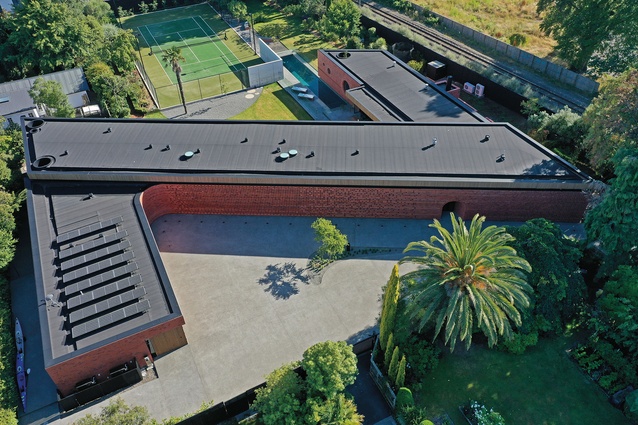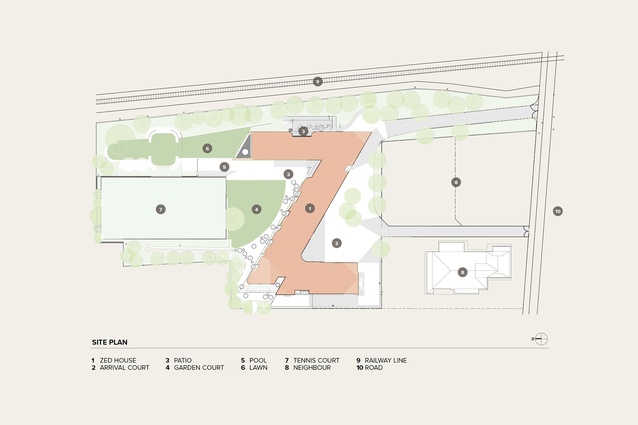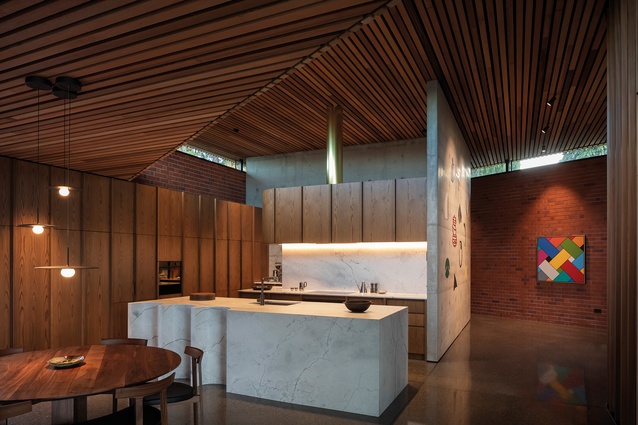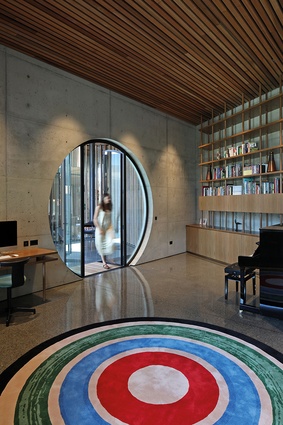Country manor come to town
Pip Cheshire navigates the striking arrangement of formal and informal space at RTA Studio’s Zed House, located in the affluent suburb of Fendalton, in Ōtautahi Christchurch.
We have seen RTA’s published projects at Tāwharanui, the Catlins, Wānaka, the Cardrona Valley and many other places. In each, there is a reaching out to establish connection to topography, climate and social precedent: the ubiquitous Central Otago barns, the brightly coloured school buildings drawing on marae precedent, and the brickwork and perforations of metal façades of commercial projects scattered along Ponsonby Road.
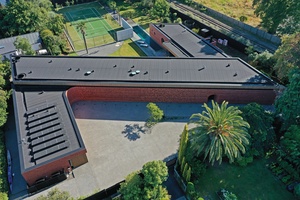
Amid all that contextual referencing, there are outliers: buildings that might owe something to some aspect of place but in which the enthusiasm for making a singular statement prevails over a more rigorous reading of place. The Fale Marker on Great Barrier Island’s Medlands Beach is one such project. In this beach house, references to Pacific housing are mixed with that of a maritime navigational aid to create a project that has achieved something of an iconic status in the architecture media. This is thanks, almost entirely, to a photograph highlighting the simple clarity of the seaward façade’s composition.
If the open dunes of Aotea offer an abundance of imagery for a simple bach, an extensive brief for a house on the flat plane of Christchurch is a more complex business. Though shaken about in the last few years, there survives, still, a well-established and secure social hierarchy that has at its heart the leafy suburb of Fendalton. It’s hard to figure out why one area of a flat city plane might have a higher cachet than another yet, for three or four generations, the streets north-west of Hagley Park have been home to the city’s power elite and their large residences.
RTA’s project is a big house, not in area, though I guess that is not insubstantial, but in its programme. The house eschews singularity of form and concept in favour of a certain level of unknowability. This is achieved not through concealment but through ordering and managing one’s engagement with the building such that we are never able to see the building in the round; instead, we are offered several set-piece views, the first of which involves entry.
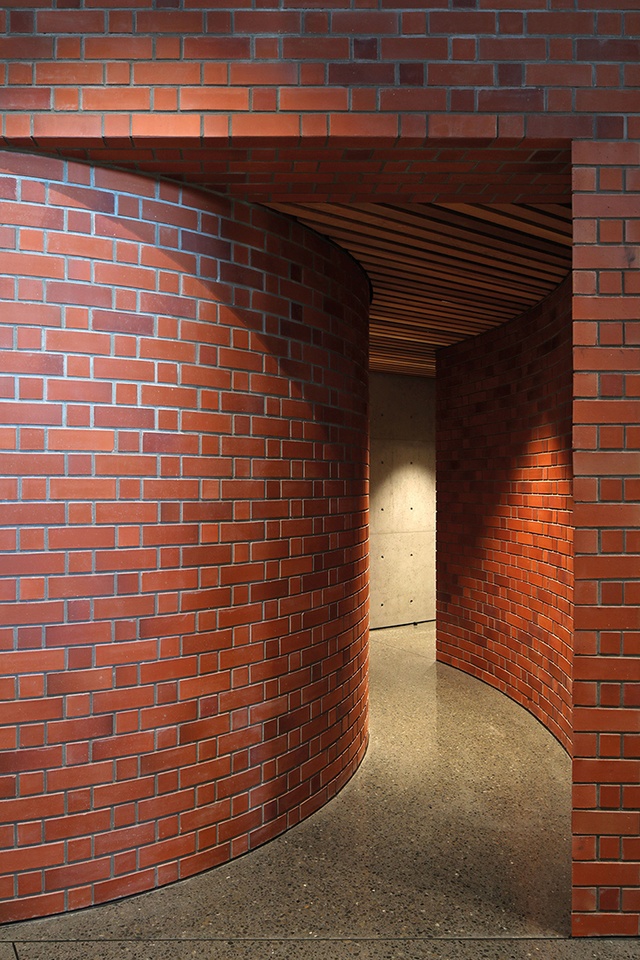
There is no means of pedestrian entry; we are expected to arrive by vehicle and announce ourselves at a squawk-box located up the drive, away from the road edge. It’s not the long avenue of trees and sweeping drive around the fountain, in the style of an English country manor, but it’s not far off it. The effect is the same: moving welcome from the front door to the vehicle court in front of the house’s dominant façade. By the time we have navigated the gate and swept into the courtyard, the hostess is already there, with barking dog.
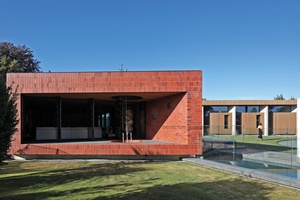
This sequence formalises an experience familiar from the approach to other houses: the momentary taking stock of the architecture and speculating about occupants and interior as we wait for the front door to open. Here, we are invited to stand in the courtyard and survey a very organised façade, a garage ahead of us and, at an acute angle coming towards us, the façade of the main house. It is a long, perforated screen of carefully selected and placed bricks creating a crafted façade through which we re invited to enter by means of a low, arched opening.
It’s a curious entry, which has an intimacy that reinforces the grandeur of the façade we have just left; yet, there is something about the emergence of that arched entry beyond the line of the entry wall and into the house. It is like an internal porch and we ask ourselves whether we are inside the house or still outside. The combination of a baronially scaled gallery skewing off to our left behind the brick façade and the open-planned domesticity stretching out in front of us makes it clear we are indeed within.
The entry is at the nexus of two wings of the house. The long gallery illuminated by that perforated brick façade is generous: an elegantly proportioned passage opening at its western extremity to a Bernar Venet sculpture. As one travels its length, complexity is revealed; the pattern of the brick screen’s perforations transforms as we progress. The screen projects afternoon light onto the in-situ concrete walls opposite, within which recessed doorways reveal a hint of the serried rank of bathrooms and bedrooms within.


The domestic programme of the house, and that of its entertainment and hosting activities, are arrayed along a third wing of the house that stretches north from the entry, deep into the garden to which it opens on both sides. This wing is a quite shocking revelation after the formality of entry, the free plan seemingly casual and informal in comparison with the punctured façade and the solid enclosures of the bedrooms. This is an interesting reworking of the big house in contemporary life. There is no, or perhaps only limited, back-of-house staff to prepare the evening meal or laundry maid gathering up the detritus of daily life to restore order. The arrangement here is unusual; the procession from the front door traverses the heart of the family spaces — the kitchen, family dining and TV areas — before attaining the formal sitting room within the far pavilion of the garden wing. Even in more modest houses, the theatre of public arrival is generally scripted by a careful layering of spaces and revelation of private life.
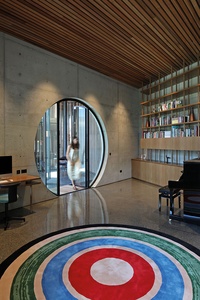
This arrangement reinforces that separation between public space and private admission to the world within that occurred in the courtyard as we alighted from our vehicle. Having been admitted at the gate and penetrated the façade, we are offered free rein over the house and garden, though the concrete bedroom enclosures along that baronial bedroom gallery clearly defy easy admittance. The dichotomy between the formality of private spaces and the looser arrangement of the living pavilion is reflected in the building materials, too. Where the bedroom wing is robust concrete and timber with deeply set penetrations to the spaces within, the living spaces are contained within a lower-height pavilion of brick and glass given gravitas by beautifully designed, detailed and constructed timber cabinetry.
The primacy of the bedroom wing over that of the living pavilion, in terms of material, height and location within the parti is an unusual arrangement, manifesting the separation of the internal private realm of sleeping from that of daily living. The reconciliation of these two disparate schemata occurs where the bedroom and living wings intersect. There, the robust concrete enclosures of the bedrooms spring off from a pair of spaces that are quite remarkable in their sculptured intensity: one a study space, the other an internal garden, the orangerie. The former is a substantially enclosed volume focusing one’s attention on the matters at hand, the latter inviting the garden into the house in a nod to the site’s former occupants, one of whom was the proud gardener parent of one of the current house’s owners. Swept clean of the owner’s childhood home by the 2011 earthquakes, the site was thus a tabula rasa. A gentle garden walk incorporated into landscape architect Robert Watson’s work and the recurrent motif of arched forms are further reminders of an intergenerational engagement with this large, flat site.
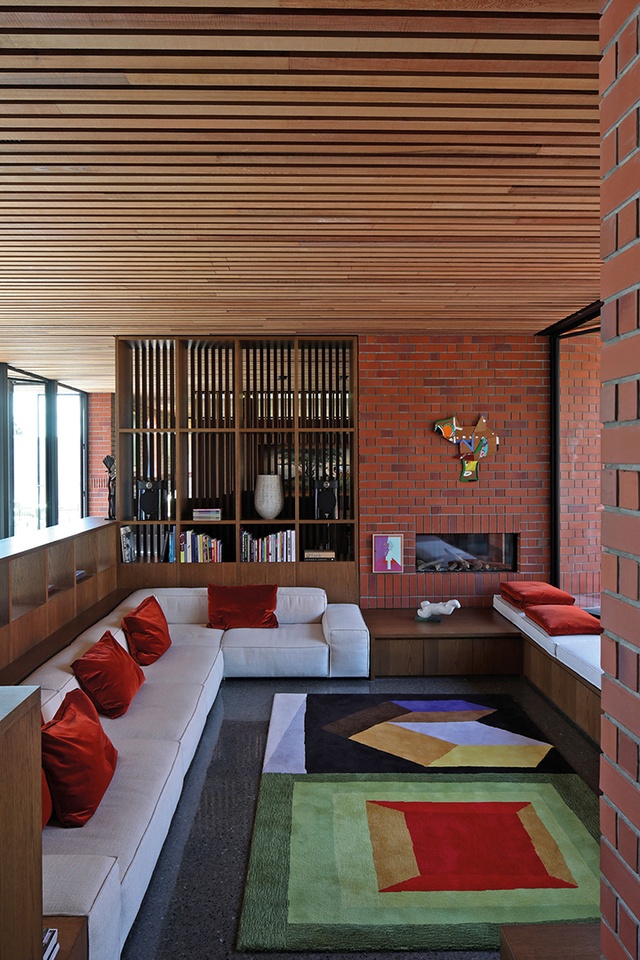
Just as the public and private programmes of the house are brought together at the indoor garden, so is the reconciliation of the house’s angular geometry one of the house’s most successful features. The parti of wings joined at an acute angle establishes many difficult challenges that are invariably handled in inventive ways. At the end of that baronial gallery, for example, we are invited into a low, curved, hinge-like passage leading to a laundry, gymnasium and garage. Within the bedrooms, intimately scaled and angled timber boxes reassert the property’s orthogonal boundaries while creating intimate study spaces projecting into the garden under the overhang of the wing’s concrete shell. They are a delightful contrast with the lofted bedrooms, the height of which allows a sleeping platform for overnighting chums tucked away above the wardrobes.
The commission of a private house with a big programme is a challenge that can induce uncertainty in the strongest of hearts and, I understand, taxed Naish at the project’s genesis. Given the employment of so many materials, some of which are injurious to the planet, there is surely an obligation to ensure that the house has some greater programme than the simple aggregation of spaces and forms. The finished house embraces that challenge and adds to that suburb’s rich history of substantial houses, many of which are still found at the ends of long driveways. Few, if any, so consciously embrace with such elan the contemporary freedoms of the free plan and reconcile democratised domestic life with the formal composition of a country manor house come to town.


